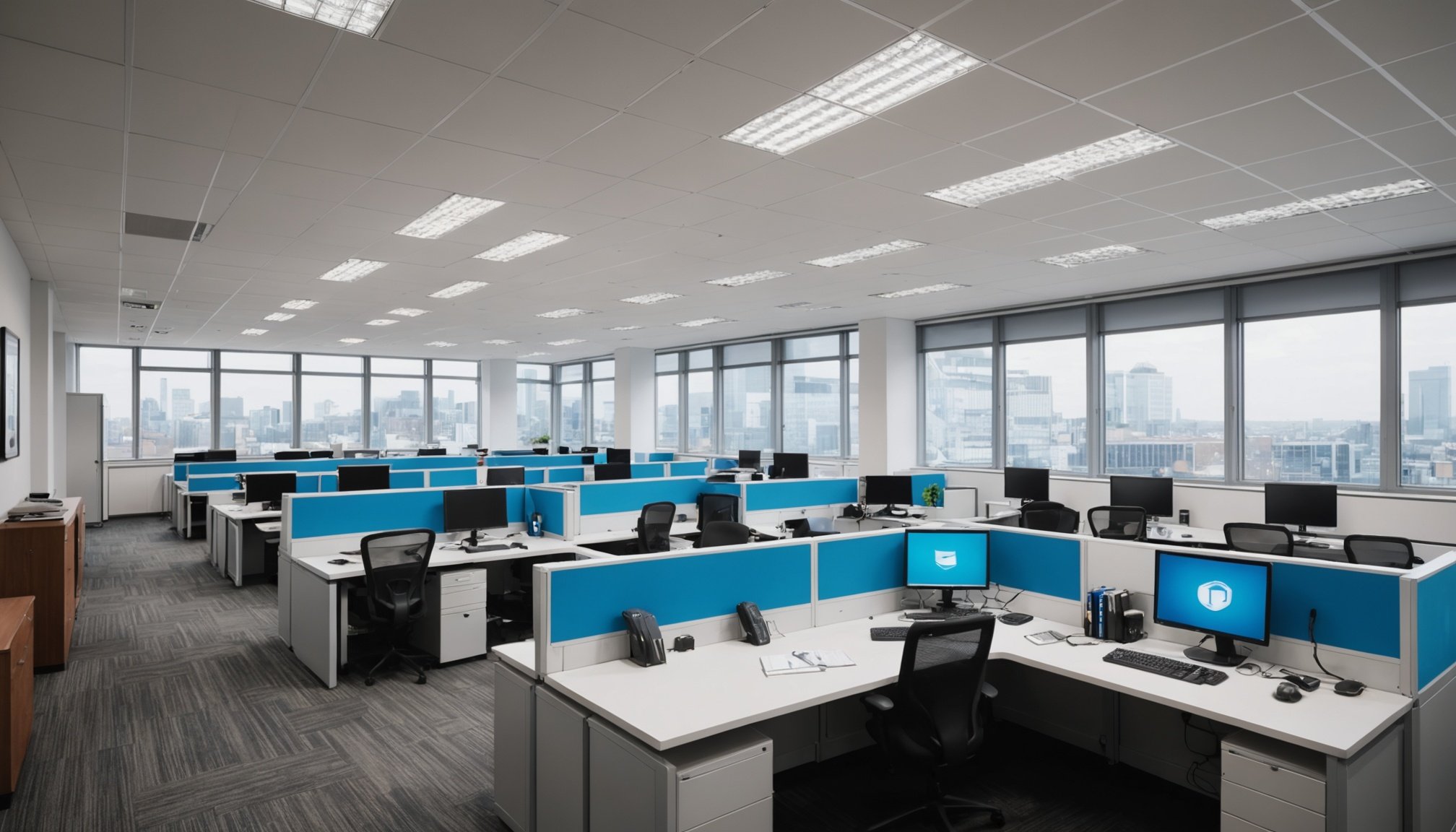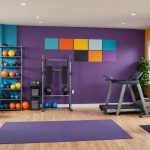Understanding HVAC Optimization
In modern office workspaces, HVAC optimization is crucial for reducing energy consumption. These systems can account for a significant portion of an office’s energy usage, making their efficient operation paramount.
Optimizing HVAC involves various techniques that enhance energy efficiency. One common approach is the use of smart thermostats, which allow for precise control over the office environment, ensuring that energy is only used when necessary. Another technique is the proper maintenance and cleaning of HVAC components to ensure they operate efficiently without excessive energy draw.
Topic to read : Mastering Real Estate Triumph: Essential Tactics for Navigating Risk in Unpredictable Markets
Implementing an HVAC optimization strategy directly impacts office comfort, significantly influencing workplace productivity. Workers perform better in environments with stable temperature and air quality. Studies have shown that a well-regulated office climate can lead to higher concentration levels and fewer employee absences due to discomfort.
It’s essential for businesses to recognize that effective HVAC optimization not only cut costs but also contributes positively to staff well-being. Adopting these strategies reflects a commitment to both fiscal responsibility and employee satisfaction, ultimately benefiting the business’s bottom line while promoting a positive workplace culture.
Also to discover : Revolutionizing City Living: Seamless Smart Grid Integration for a Greener Tomorrow
Advanced Strategies for Energy Efficiency
Incorporating advanced strategies into energy-efficient HVAC systems can create significant advantages for office spaces. A keystone in this advancement is the integration of smart thermostats and controls, which provide precise regulation and scheduling. These tools allow office managers to tailor heating and cooling schedules to actual occupancy and weather patterns, thereby reducing unnecessary energy use.
Another innovative approach is the use of Variable Refrigerant Flow (VRF) systems. These systems adjust the amount of refrigerant to meet the specific demands of different areas within a building. By allowing individual zones to maintain customised temperatures, VRF systems enhance energy efficiency and comfort, reducing the carbon footprint of office workspaces.
Additionally, office buildings are increasingly adopting Energy Recovery Ventilation (ERV) systems. These units transfer heat between incoming and outgoing air, recovering energy that would otherwise be wasted. ERV systems can reduce heating and cooling costs while improving indoor air quality, a critical factor for maintaining a healthy and productive office environment.
Integrating these technologies not only cuts energy costs but also contributes to sustainable business practices, reflecting an organisation’s dedication to innovation and environmental responsibility.
Case Studies of Successful HVAC Implementation in the UK
Exploring HVAC case studies provides valuable insights into effective energy management. In the UK, several companies have embraced HVAC optimization with impressive results. One notable example involves a leading office space in London that implemented a comprehensive energy efficiency plan. By integrating advanced controls and optimized ventilation systems, they achieved a 30% reduction in energy usage within the first year.
These UK office spaces exemplify practical applications of cutting-edge technologies and their quantifiable benefits. The financial savings from reduced energy consumption are substantial, with some companies reporting annual savings exceeding £100,000. Additionally, employees have noted a marked improvement in comfort levels, directly correlating with increased productivity and reduced absenteeism.
The lessons learned from these successful implementations highlight the importance of strategic planning and regular system evaluations. Businesses adopting a systematic approach to HVAC enhancements can significantly boost both operational efficiency and environmental sustainability. Engaging staff in these processes also fosters a culture of eco-consciousness, amplifying the positive impact on the company’s overall performance. Adopting such practices not only fulfills regulatory guidelines but also strengthens a company’s reputation as a leader in sustainable business operations.
Identifying Benefits of HVAC Optimization
HVAC optimization offers numerous advantages crucial for modern businesses. One of the key benefits is the financial savings generated from reduced energy bills. By implementing energy-efficient practices, companies can see substantial reductions in operational costs. These savings can then be reinvested into other areas of the business, fostering growth and innovation.
Moreover, employee comfort is significantly enhanced through optimized HVAC systems. This leads not only to increased productivity but also to a more pleasant office environment. When employees work in a consistently comfortable climate, their performance and focus improve, resulting in higher productivity levels and lower absenteeism rates.
In addition to economic and comfort-related benefits, optimized HVAC systems provide a positive impact on environmental sustainability. By reducing energy consumption, businesses can decrease their carbon footprint, aligning with broader goals of sustainability and corporate responsibility. This commitment to eco-friendly practices is increasingly valued by customers and stakeholders, enhancing the company’s reputation. Thus, HVAC optimization not only represents an investment in the company’s immediate operational efficiency but also its long-term environmental and economical strategies.
Practical Implementation Steps for Offices
Implementing effective HVAC maintenance and optimization strategies requires a structured approach. Firstly, conducting thorough energy audits is essential. These audits help identify inefficiencies and areas for improvement in the office’s energy consumption. With comprehensive data, businesses can better understand their needs and create targeted solutions.
Developing a phased HVAC optimization plan ensures systematic implementation. This approach might include upgrading to smart thermostats or integrating VRF systems incrementally. By tackling upgrades in stages, companies can manage costs effectively while progressively enhancing their system’s efficiency.
Routine HVAC maintenance plays a crucial role in sustaining long-term efficiency gains. Regular cleaning and inspection of system components prevent energy waste and prolong equipment lifespans. Additionally, timely repairs and updates nip potential issues in the bud, reducing downtime and ensuring consistent office comfort.
Here are some key actions to consider:
- Schedule bi-annual professional HVAC inspections
- Replace filters every 3-6 months
- Calibrate thermostats regularly
- Educate staff on optimal thermostat settings
By following these steps diligently, office spaces can achieve significant energy efficiency and cost savings, ensuring a comfortable work environment while promoting sustainable business practices.
Recent Technologies and Innovations in HVAC
In the realm of innovative HVAC technologies, the shift towards automation and energy management is transformative for office spaces. Emerging technologies focus on maximising energy efficiency and comfort through intelligent systems.
Automated HVAC solutions are at the forefront, allowing for real-time adjustments based on occupancy and weather. These systems use sensors and data analytics to optimise temperature settings, ensuring energy savings without compromising comfort. For instance, automated systems can reduce heating and cooling in unused areas, thus cutting down unnecessary energy use.
Energy management is further enhanced by IoT-enabled devices that provide detailed insights into consumption patterns. These insights empower facility managers to make informed decisions on energy usage and operational improvements.
Future trends anticipate a rise in smart HVAC systems that integrate with broader building management technologies. These advancements promise enhanced connectivity, enabling seamless communication between devices for optimal performance.
Embracing these technological innovations not only furthers sustainability but also aligns with evolving office workspace needs. By integrating such systems, businesses can achieve greater efficiency and adaptability in managing their environments.
Government Guidelines and Sustainability Practices
In the realm of HVAC optimization, aligning with UK government guidelines is pivotal for enhancing energy efficiency. Regulations such as the Minimum Energy Efficiency Standards require buildings to adhere to specified energy performance criteria, encouraging offices to adopt sustainable practices.
To support these measures, the UK government offers various incentives for businesses that implement eco-friendly strategies. These benefits, including tax reliefs and grants, make it financially feasible for companies to upgrade their HVAC systems. By leveraging these opportunities, businesses can reduce operational costs while advancing towards sustainability goals.
The rise of sustainability in corporate responsibility underscores the firm’s commitment to reducing its environmental footprint. By integrating HVAC optimization aligned with government standards, businesses demonstrate leadership in responsible practices. This commitment not only attracts environmentally conscious clients but also boosts staff morale and retention.
In summary, adherence to governmental guidelines and a proactive approach toward sustainability enhances the business’s reputation and strengthens its market position, making it a model for eco-conscious enterprises.






